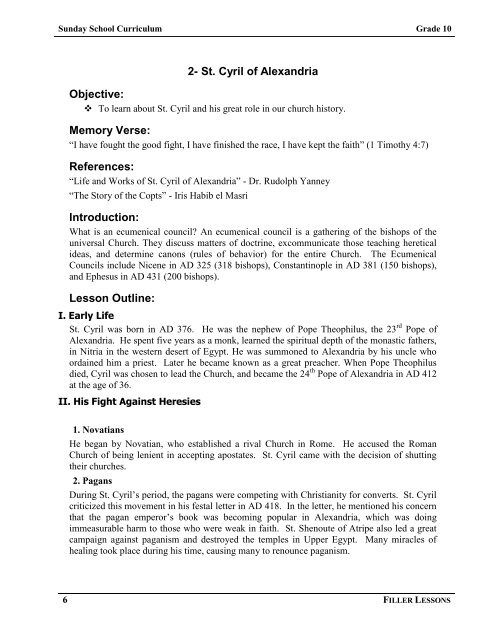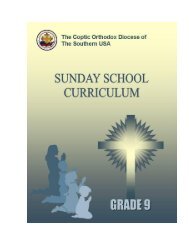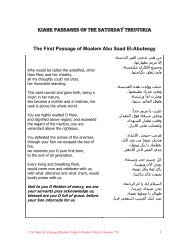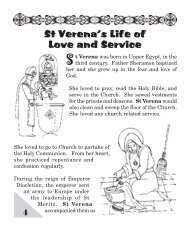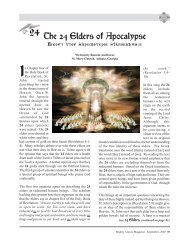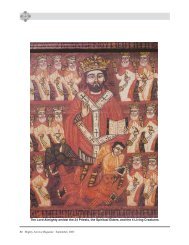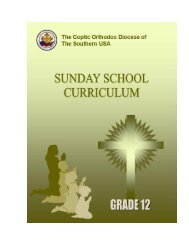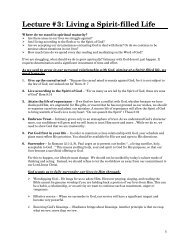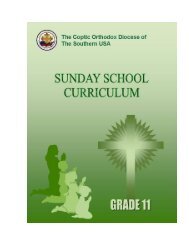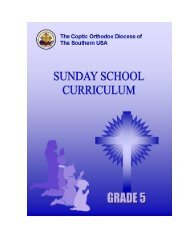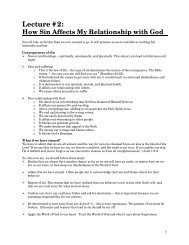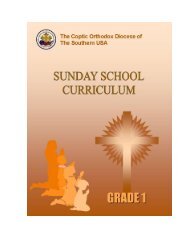Grade 10 - Coptic Orthodox Diocese of the Southern United States
Grade 10 - Coptic Orthodox Diocese of the Southern United States
Grade 10 - Coptic Orthodox Diocese of the Southern United States
You also want an ePaper? Increase the reach of your titles
YUMPU automatically turns print PDFs into web optimized ePapers that Google loves.
Sunday School Curriculum <strong>Grade</strong> <strong>10</strong><br />
2- St. Cyril <strong>of</strong> Alexandria<br />
Objective:<br />
To learn about St. Cyril and his great role in our church history.<br />
Memory Verse:<br />
―I have fought <strong>the</strong> good fight, I have finished <strong>the</strong> race, I have kept <strong>the</strong> faith‖ (1 Timothy 4:7)<br />
References:<br />
―Life and Works <strong>of</strong> St. Cyril <strong>of</strong> Alexandria‖ - Dr. Rudolph Yanney<br />
―The Story <strong>of</strong> <strong>the</strong> Copts‖ - Iris Habib el Masri<br />
Introduction:<br />
What is an ecumenical council? An ecumenical council is a ga<strong>the</strong>ring <strong>of</strong> <strong>the</strong> bishops <strong>of</strong> <strong>the</strong><br />
universal Church. They discuss matters <strong>of</strong> doctrine, excommunicate those teaching heretical<br />
ideas, and determine canons (rules <strong>of</strong> behavior) for <strong>the</strong> entire Church. The Ecumenical<br />
Councils include Nicene in AD 325 (318 bishops), Constantinople in AD 381 (150 bishops),<br />
and Ephesus in AD 431 (200 bishops).<br />
Lesson Outline:<br />
I. Early Life<br />
St. Cyril was born in AD 376. He was <strong>the</strong> nephew <strong>of</strong> Pope Theophilus, <strong>the</strong> 23 rd Pope <strong>of</strong><br />
Alexandria. He spent five years as a monk, learned <strong>the</strong> spiritual depth <strong>of</strong> <strong>the</strong> monastic fa<strong>the</strong>rs,<br />
in Nitria in <strong>the</strong> western desert <strong>of</strong> Egypt. He was summoned to Alexandria by his uncle who<br />
ordained him a priest. Later he became known as a great preacher. When Pope Theophilus<br />
died, Cyril was chosen to lead <strong>the</strong> Church, and became <strong>the</strong> 24 th Pope <strong>of</strong> Alexandria in AD 412<br />
at <strong>the</strong> age <strong>of</strong> 36.<br />
II. His Fight Against Heresies<br />
1. Novatians<br />
He began by Novatian, who established a rival Church in Rome. He accused <strong>the</strong> Roman<br />
Church <strong>of</strong> being lenient in accepting apostates. St. Cyril came with <strong>the</strong> decision <strong>of</strong> shutting<br />
<strong>the</strong>ir churches.<br />
2. Pagans<br />
During St. Cyril‘s period, <strong>the</strong> pagans were competing with Christianity for converts. St. Cyril<br />
criticized this movement in his festal letter in AD 418. In <strong>the</strong> letter, he mentioned his concern<br />
that <strong>the</strong> pagan emperor‘s book was becoming popular in Alexandria, which was doing<br />
immeasurable harm to those who were weak in faith. St. Shenoute <strong>of</strong> Atripe also led a great<br />
campaign against paganism and destroyed <strong>the</strong> temples in Upper Egypt. Many miracles <strong>of</strong><br />
healing took place during his time, causing many to renounce paganism.<br />
6 FILLER LESSONS


